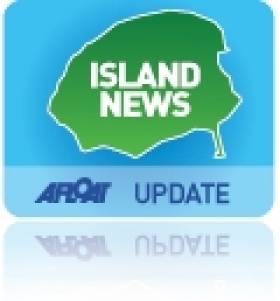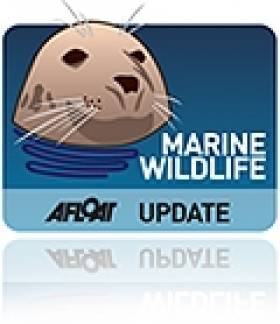Displaying items by tag: SAC's
Dalkey Prospect Foreshore Licence Disputed
#DALKEY OIL LICENCE – An Taisce has alleged the Government acted unlawfully in how it granted Providence Resources a foreshore licence at the Dalkey Island prospect in Dublin Bay, reports The Irish Times.
In High Court proceedings, An Taisce claims the Government wrongly concluded an environmental impact assessment (EIA) was not required to be carried out prior to awarding the licence to Irish-listed oil and gas exploration company.
An Taisce claims that under the relevant EU directive an EIA is required and the decision of September 27th last granting the licence should be quashed. It is also seeking a declaration the Government has failed to properly transpose or implement environmental impact assessment Directive 2011 92 EU into Irish law.
The licence is for an area in the Kish Bank basin and allows Providence carry out a number of activities, including a seismic study, well site survey and the drilling of an exploration well. The edge of the licence area is about 10km from Dalkey Island.
Mr Justice Michael Peart yesterday granted the ex parte application (one side only represented) for leave to bring the judicial review proceedings and returned the matter to February.
As reported earlier this month on Afloat.ie, the Minister for Heritage Jimmy Deenihan announced proposals for six Special Areas of Conservation (SACs) sites to include an area designated between Rockabill to Dalkey Island.
Helicopters Role in Proposed Upgrade of Dalkey Island Harbour
#DALKEY ISLAND FERRY – Up to 500 helicopter flights over an 8-day timeframe could be operating across the 300m wide Dalkey Sound, following proposed plans to upgrade the island's slipway harbour were unveiled last week, reports Jehan Ashmore.
According to consultants that carried out a report for Dun Laoghaire-Rathdown County Council, the proposed upgrade of the slipway, under a PART 8 Scheme, could see a site near Sorrento Point on Coliemore Road, as the desired landing location to load helicopters heading for the island with machine plant, equipment and materials.
Under the proposed development of up to 12 weeks to complete, work would involve raising the existing slipway to create a stepped top surface, widening of the existing channel, a new raised pier section with transitional steps, a handrail, mooring rings and an access ladder.
The consultants Malachy Walsh & Partners and Shaffrey Associate Architects have however indicated that Dun Laoghaire may be an alternative helicopter embarkation point. Total construction costs of the project are estimated at approximately €228,000, however should Dun Laoghaire be opted instead, this would double lift costs compared to Dalkey, adding about 84% to the overall helicopter costs.
The use of helicopter transportation is not new to the island, as in the early 1990's works on the island harbour also saw flights running back and forth to the grounds of the Dalkey Island Hotel, now occupied by a luxury apartment complex.
The consultant's report also adds that Dalkey Island is designated as a Special Protection Area (SPA) for roosting the common, artic & roseate tern species in accordance with the requirements of the EU Habitats Directive 1992, however given the scale and the location of the slipway works, the report concludes that a full appropriate assessment screening would not be required for the Dalkey SPA because it is considered not to have a significant effect on this site.
As previously reported on Afloat.ie the island has also been proposed as a Special Area of Conservation (SAC) as part of six Natura 2000 sites within Irish waters.
Plans and particulars of the proposed slipway upgrade of the Dalkey Island PART 8 Scheme development including timescale of public consultation process, can be found in greater detail to include downloadable PDF documents, by following this LINK.
Providence Not Informed of Dalkey Island Designation
#DALKEY DESIGNATION – The company prospecting for oil off Dalkey in Dublin Bay, Providence Resources said that they had not been given advance information of a Government proposal to designate an area from Dalkey Island to north of Swords as a Marine Special Area of Conservation
Maps provided by the Department of Arts, Heritage and the Gaeltacht showing the location of six proposed marine special areas of conservation appeared to show an overlap between Providence Resources's location for a seismic survey and an area called Dalkey Island to Rockabill, which is earmarked for special conservation.
Designation as a special area of conservation (SAC), or even a candidate area, means development would be extremely problematic.
Minister for Arts, Heritage and the Gaeltacht Jimmy Deenihan yesterday proposed more than 27,000 hectares from Dalkey Island northwards across Dublin Bay to north of Swords be designated such an area. The location was one of six designations made under the EU habitats directive. To read more, see yesterday's Irish Times.
































































